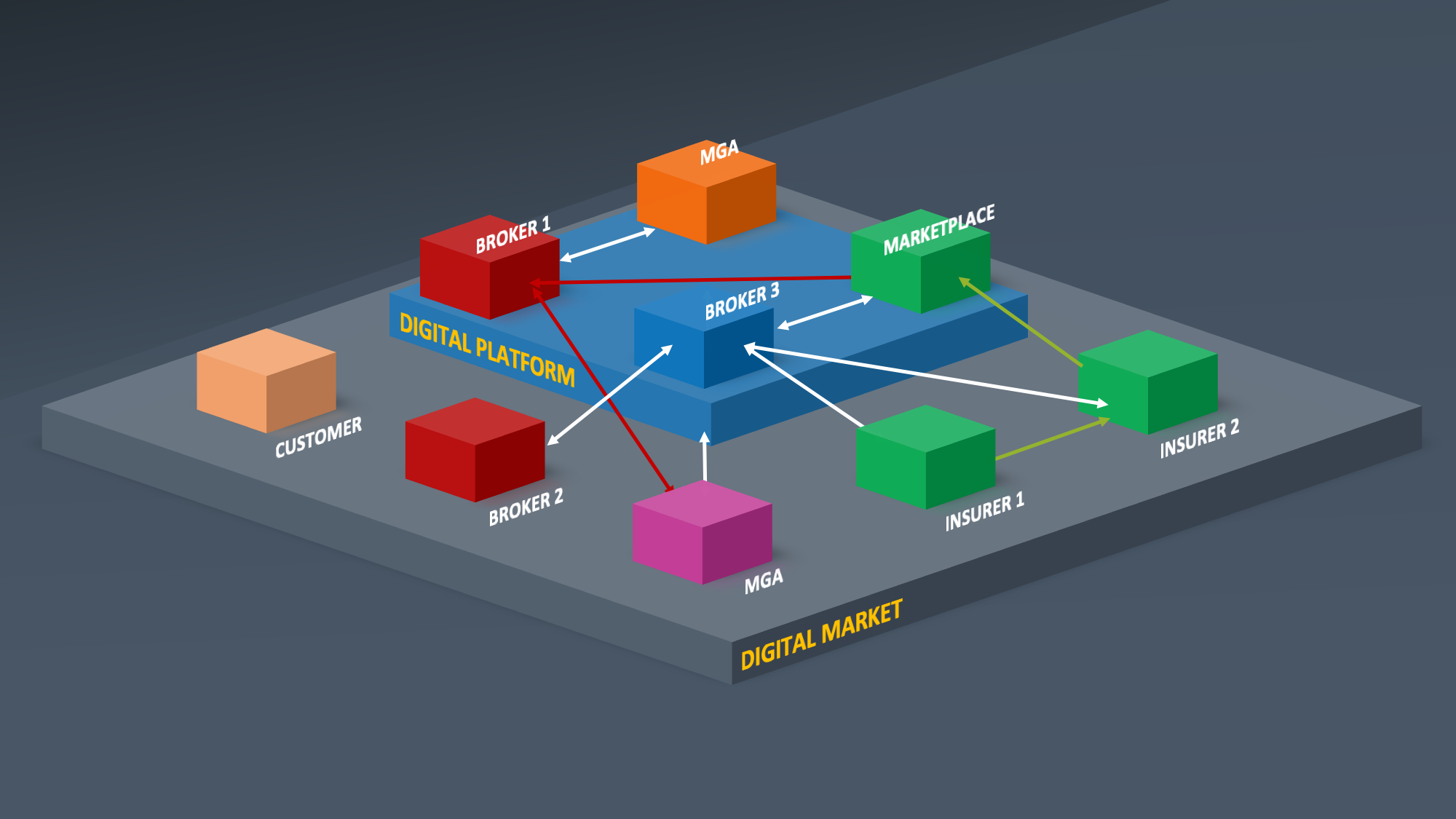
It is not only in times of crisis that the resilience of commercial enterprises and organisations is put to the test. Even before the corona eruption and the lockdown from mid-March 2020, large areas of the insurance industry had long been facing major challenges: Cost and margin pressure, cumbersome grown IT systems, InsurTechs with innovations often implemented in a short time and last but not least customers who expect fast and user-oriented product and service experiences in the digital age.
Short & Concise
- Digitalisation of products & processes and the network are the basis for resilience.
- Platform or ecosystem needs harmonized data and processes that run on the data.
- Participants need courage and breath to accompany such a change for ten or even 15 years.
One basis for resilience to crises and normal market upheavals is – and this should be common knowledge by now – the digitization of products and processes. Only then is it possible to react quickly to market changes.
Second basis: Digitalisation of network business
In the industrial insurance sector, a second necessary basis is added, which even in the diverse platform discussions is of too little importance: The tried and tested networks also need digitalisation. After all, business only works nationally and internationally in networks. Industrial and commercial clients are looking for the best possible coverage concepts for their highly individual risks, which are served both nationally and internationally. It is not unusual for insurers to share very large risks among themselves. At the same time, these business relationships are rarely – if ever – terminated completely and permanently. In addition, there are connections to and between large and small brokerage houses and broker associations in various forms.
The transformation of industrial insurance must therefore be able to reflect the network concept if it is to be successful at all. First of all, success means that experts can think in completely new ways about old and new products. And secondly, that slow and possibly manual processes are not only digitized, but also automated if possible.
Innovations through sharing in the network
It is about nothing less than innovative ability – as in the case of the change in the automotive industry from the combustion engine to electric mobility. Last year, the Boston Consulting Group concluded in its study “The Most Innovative Companies 2019 – The Rise of AI, Platforms, and Ecosystems” that “platforms and ecosystems perform multiple functions, including facilitating (and sometimes exploiting) the innovations of others, extending reach and collaboration, and enabling new solutions and offerings from multiple parties.
Even though the insurance business ultimately shares money in many ways, in the form of premiums, brokerage, tips, taxes and claims settlement, the complexity is extremely high. This requires harmonized data worlds and processes that run on the data. Framework requirements for such a platform or ecosystem, especially for industrial insurance:
- Business relationships must be able to be concluded and established digitally without the need for IT projects lasting several years.
- These must be able to be resolved digitally just as quickly – without loss of business and data.
- The technology required for this must not be an Apple Store or Amazon, but must be completely open.
- Participants & partners need a long-term perspective of more than ten years for their investments in an industrial insurance network.
- In the further development of the software, all participants benefit equally from common functionalities, keyword: co-innovation.
Point 3 has become a truism in the entire industry. Therefore, the technological approach must be thought that not only one platform will prevail. Several networks must be able to integrate with each other and at the same time be open for cooperation with other internal platforms such as an portfolio management, with the digital solution of an insurer and also with InsurTechs in the industrial and commercial sector.
Silo think? No. Strategic collaboration? Yes.
How can such a network be created? Ultimately, it always has to be initiated by two or three partners who are completely free from silo thinking and unexpressed competitive reflexes. These partners should find an institutional approach in which really everyone can participate. Moreover, the initiatives must ultimately be strategic. Strategic means here: Those involved must be prepared to accompany such change for ten or even 15 years. Of course, this also means calculating investments for such a period of time. Part of a viable, long-term approach to a solution is also to have as much technical intelligence as possible, which then works on these issues. The added value increases all the more clearly when the technical experts from different companies join forces.
The developments and experiences of recent years in the industry have also shown on an operational level that successful digitisation requires various stages of evolution. These have been deduced:
- Identify the right problem,
- Find and network experts and developers for exactly this problem,
- ensure the functionality of the digital solution,
- create acceptance with partners and in the industry,
- generate profit through the network solution.
Digitization is the basis for AI value-added services
This is all a long way off. In the future, further innovative network achievements will be possible on this path, which would otherwise hardly be possible in view of the immense resources tied up. First and foremost, the innovative use of artificial intelligence (AI) for the creation of value-added services, which ultimately make the work of the experts easier. Possible applications range from risk prevention to individual risk assessments from shared data patterns and automated claims processing. Then the partners – again as competitors – could each concentrate on the complex clients, risks and claims.
Sharing code – Benefiting together
In conclusion, this makes it clear that whoever says A, must also say B. In a network of different networks as described above, man and machine must also work together operationally – right down to the code base. Basic functionalities from different projects and constellations are shared in an ideal platform network and directly played out to all participants. Participation as a way of building up a large common goal is thus even more valuable than in the past. This is how innovation can succeed in the network.
Photocredit: AdobeStock



Neueste Kommentare